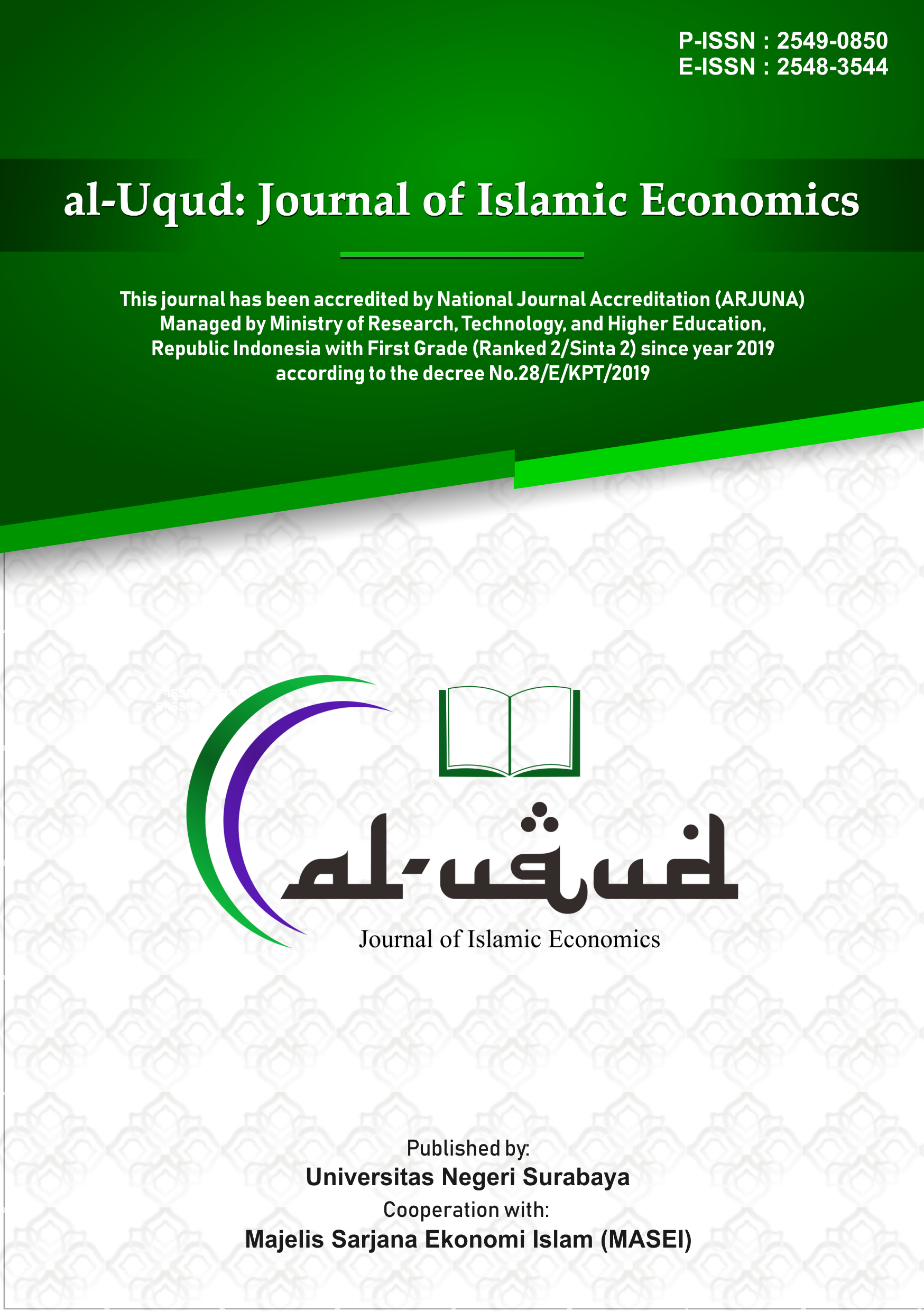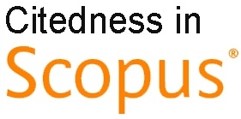MUDHARABAH AGRI-CROWDFUNDING IN THE EX-CLAY MINE UTILIZATION PROGRAM OF PT. SEMEN INDONESIA (PERSERO), TBK. CAMPUS OF C UNIVERSITAS INTERNASIONAL SEMEN INDONESIA
DOI:
https://doi.org/10.26740/al-uqud.v3n2.p133-148Keywords:
Ex-Clay Mining, Financial Feasibility, Internal Rate Of Return, Net Present ValueAbstract
The objectives of research are to study market, technical, and financial feasibility of crowdfunding project using Syariah contract on specified agriculture project based on a higher education institute potency. Such process will be carried out to identify a feasibility of the land use in the project and the amount of funding needed to be collected with the concept of crowdfunding. The construction of a project requires analysis to determine the feasibility of the project. Method of research is quantitative by calculating financial feasibility. UISI has a land area of 3.8 hectares located on Campus of C UISI. This land is an ex-clay mining land of Semen Indonesia Company. Total investment and capital funding amount to Rp 100,000,000. The investment return period is 2 years. Based on the profit and loss calculation, it can be considered that capital and investment will return in the 6th month of the 1st year. In the 1st year the IRR obtained was 19%, whereas until the end of the second year the IRR was obtained by 42%. A significant difference occurred because in the second year Belimbing Tasikmadu, and Jambu Kristal fruit could already be harvested for commercial purpose.
References
Duasaa, J. and Thaker, M.A, 2017, Proposed Integrated Cash Waqf Investment Model for Micro Enterprises in Malaysia: An Empirical Analysis, Journal of Islamic Philanthropy & Social Finance; Vol.1, No.2; 2017 eISSN: 2590-3942, Published by Center for Islamic Philanthropy & Social Finance
Forbesa, H. and Schaefera, D., 2017, Guidelines for Successful Crowdfunding, 27th CIRP Design 2017, Procedia CIRP 60 (2017) 398 403, http://doi.org/10.1016/j.procir.2017.02.021
Gitman, Lawrence J. 2003. Principles of Managerial Finance, 10th ed., International Editions Financial Series. Boston: Addison-Wesley.
Hemer, J. 2011. A Snapshot on Crowdfunding. Working Papers Firms and Region, R2.
Ibrahima, N. and Verliyantina, 2012, The Model of Crowdfunding to Support Small and Micro Businesses in Indonesia Through a Web-based platform, International Conference on Small and Medium Enterprises Development with a Theme œInnovation and Sustainability in SME Development (ICSMED 2012), http://doi.org/10.1016/S2212-5671(12)00353-X
Jumingan. 2009. Studi Kelayakan Bisnis. Bumi Kasara. Jakarta.
Kaura H. and Gerab, J., 2017, Effect of Social Media Connectivity on Success of Crowdfunding Campaigns, Information Technology and Quantitative Management (ITQM2017), Procedia Computer Science 122 (2017) 767774
Laurella C., Sandströmb C., Suseno, S., 2018. Assessing the Interplay Between Crowdfunding and Sustainability in Social Media, Technological Forecasting & Social Change, https://doi.org/10.1016/j.techfore.2018.07.015
Li, Haifeng, Chen, X., Zhang Y., Hai, M., 2018, Empirical Analysis of Factors on Crowdfunding with Trust Theory, The International Academy of Information Technology and Quantitative Management, the Peter Kiewit Institute, University of Nebraska, Procedia Computer Science 139 (2018) 120126, https://doi.org/10.1016/j.procs.2018.10.227
Morduch, J. 1999. The Microfinance Promise. Journal of Economics Literature 37, 1569.
Permaisela, D., 2019, Analysis of Productive Waqf Practice And Management: Using SWOT Analysis Method, Al-Uqud: Journal of Islamic Economics, Volume 3 Number 1, January 2019 E-ISSN 2548-3544, P-ISSN 2549-0850 Halaman 85-97 http://doi:10.26740/al-uqud.v3n1.p85-97
Pitchay, A.A., Thaker, M.A., Mydin. A., Azhar, A., and Latiff, A. R., 2017, Cooperative-Waqf Model: A Proposal to Develop Idle Waqf Lands in Malaysia, ISRA International Journal of Islamic Finance, Vol. 10 Issue: 2, pp.225-236, https://doi.org/10.1108/IJIF-07-2017-0012
Poetz, M., &Schreirer, M. 2012. The Value of Crowdsourcing: Can Users Really Compete with Professionals in Generating New Product Ideas? Journal of Product Innovation Management.
Pujawan, I. N. 2008. Ekonomi Teknik (Edisi Kedua). Surabaya. Penerbit Guna Widya.
Thaker, M.A., Mohammed, M.O., Duasa J. and Abdullah M.A., 2016, The Behavioral Intention of Micro Enterprises to Use the Integrated Cash Waqf Micro Enterprise Investment (ICWME-I) Model as a Source of Financing, Gadjah Mada International Journal of Business Vol. 18, No. 2 (May-August 2016): 111-130
Young, T. E. 2012. The Everything Guide to Crowdfunding: Learn How to Use Social Media for Small-Busi
Downloads
Published
How to Cite
Issue
Section
License
CC BY 4.0 Abstract views: 922
,
Abstract views: 922
, PDF Downloads: 648
PDF Downloads: 648








